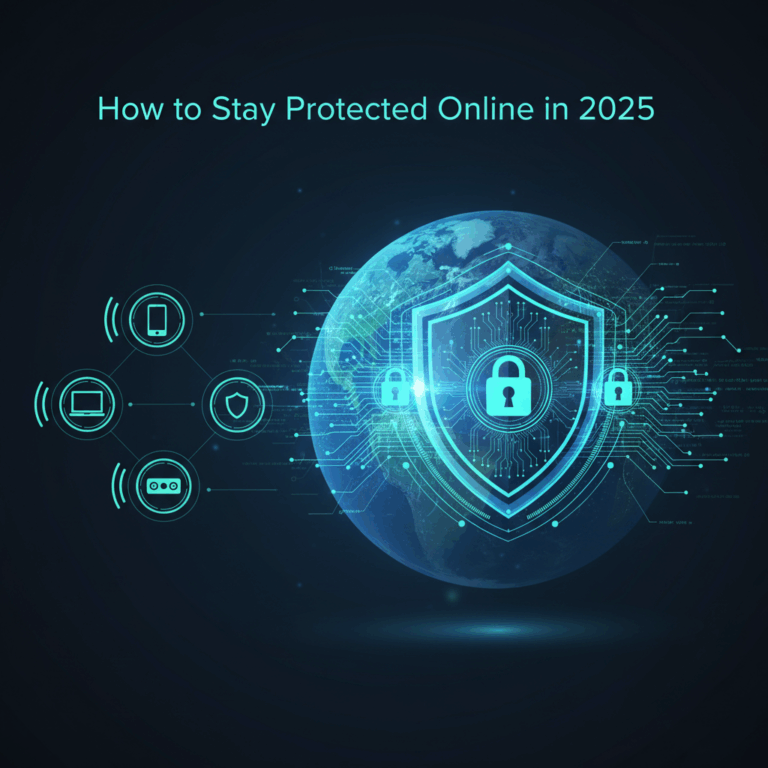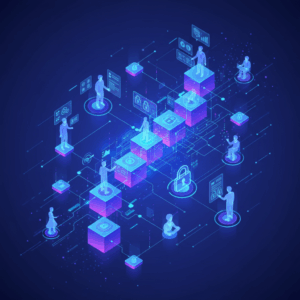Fundamental Cybersecurity Practices
In 2025, protecting your digital life starts with implementing fundamental cybersecurity practices. These steps guard against evolving cyber threats effectively.
Key among these practices is using strong, unique passwords combined with additional security layers. Together, they form the foundation of online safety.
Adopting these habits reduces the risk of unauthorized access and enhances your overall digital security posture significantly in today’s threat landscape.
Using Strong, Unique Passwords and Password Managers
Creating strong, unique passwords for each online account is essential to prevent credential theft and reuse attacks. Avoid simple or repeated passwords.
Password managers help generate and store complex passwords securely, reducing the burden of memorization and improving your security hygiene.
These tools encrypt passwords and facilitate easy login processes while minimizing risks from weak password choices across multiple sites.
Enabling Multi-Factor Authentication (MFA)
Multi-factor authentication (MFA) adds a crucial extra step by requiring additional verification beyond passwords, such as a code from your phone.
MFA dramatically decreases the chance of unauthorized account access, even if your password is compromised, offering much stronger protection.
Enabling MFA is a straightforward security enhancement that significantly strengthens your defenses against hacking attempts and fraud.
Device and Software Security Measures
Keeping your devices and software updated is essential for defending against cyber threats. Regular updates patch vulnerabilities that hackers often exploit.
Using trusted security tools like antivirus and anti-malware programs adds another protective barrier to detect and remove harmful software.
Firewalls and WPA3 encryption enhance your network’s security, ensuring data transmission is safe from interception and unauthorized access.
Regular Updates and Patch Management
Software and device manufacturers release updates to fix security flaws that could be exploited by attackers. Installing these patches promptly reduces risk.
Enabling automatic updates ensures you receive critical fixes without delay, keeping your system protected against the latest threats.
Ignoring updates leaves your system vulnerable, making it easier for cybercriminals to gain unauthorized access or deploy malware.
Antivirus, Anti-Malware, and Anti-Spyware Tools
Reliable antivirus software scans your device for known threats, blocking or removing viruses, spyware, and other malicious programs effectively.
Regular scans and real-time protection enable early detection and prevention of infections, keeping your data and system integrity intact.
Choosing comprehensive security suites addresses a wider range of threats, including ransomware and phishing attacks, enhancing your defenses.
Firewall and Network Encryption with WPA3
A firewall monitors incoming and outgoing network traffic, blocking suspicious activity to prevent unauthorized access to your devices.
WPA3 encryption secures Wi-Fi networks at a high standard, protecting data transmitted over wireless connections from interception.
Using WPA3 is particularly important in public or shared environments to maintain confidentiality and integrity of your communications.
Why WPA3 Matters in 2025
WPA3 provides stronger encryption and simplified secure connections, making it the recommended standard for defending against emerging wireless cyber threats.
Safe Internet and Data Protection Habits
Practicing safe internet habits is crucial in 2025 to protect your personal information and online activities from cyber threats. Awareness and caution online reduce risks substantially.
Adopting data protection strategies like using VPNs, identifying phishing attempts, and securing backups ensures your sensitive information remains confidential and recoverable.
Consistently applying these habits builds a strong defense against identity theft, fraud, and data loss caused by cybercriminals exploiting carelessness or vulnerabilities.
Using VPNs and Avoiding Public Wi-Fi for Sensitive Transactions
Using a VPN (Virtual Private Network) encrypts your internet connection, safeguarding data from interception and enhancing your privacy on any network.
Avoid performing sensitive activities like banking or shopping on public Wi-Fi unless connected through a reliable VPN, as public networks are often insecure.
VPNs mask your IP address and create a secure tunnel for your data, reducing the risk of someone eavesdropping or stealing your information over unprotected networks.
Recognizing Phishing and Suspicious Links
Phishing attacks trick users into revealing credentials or installing malware by disguising malicious messages as legitimate communications.
Learn to identify phishing emails and suspicious links by checking sender addresses, avoiding urgent call-to-actions, and not clicking unknown attachments.
Being cautious and verifying sources before interacting with links or downloads protects you from credential theft and malware infections common in phishing schemes.
Backing Up and Encrypting Sensitive Data
Regularly backing up your important data ensures you can recover information if a cyberattack or hardware failure occurs, minimizing disruption and loss.
Encrypting sensitive data, both at rest and in transit, adds an extra layer of protection, making stolen information unreadable and useless to attackers.
Use automated backup solutions and strong encryption standards to maintain data availability and confidentiality, essential components of modern cybersecurity hygiene.
Additional Online Safety and Awareness
Being mindful of how you interact on social media and online platforms is vital for maintaining your cybersecurity in 2025. Oversharing personal details can expose you to risks like identity theft.
Careful engagement helps prevent social engineering attacks and protects your privacy. Awareness about what information you reveal online is a key defense against cyber threats.
Practicing caution also reduces the chance of falling victim to scams or malicious actors using social platforms as attack vectors in sophisticated cybercrime schemes.
Cautious Interaction on Social Media and Online Platforms
Limit the amount of personal data you share publicly on social media to avoid giving cybercriminals information they can exploit for attacks or fraud.
Be wary of friend requests or messages from unknown individuals, as these may be attempts at phishing or social engineering designed to breach your security.
Review privacy settings regularly to control who can see your posts and personal information, ensuring your online presence stays as secure as possible.
Interesting Fact: Social Media and Cybersecurity
Studies show that up to 60% of cyberattacks involve data harvested from social media, making cautious sharing a critical step in your online defense.
This illustrates why maintaining strict control over your social media footprint and contacts can drastically lower your vulnerability to cyber threats.
Maintaining Cybersecurity Education and Awareness
Regularly updating your cybersecurity knowledge is essential to keep up with evolving threats and best practices in digital safety for 2025.
Engage in training, read trusted sources, and stay informed about the latest cyber risks to enhance your ability to recognize and react to potential attacks.
Continuous awareness fosters a proactive security mindset, helping you identify suspicious activity early and adopt new protective measures promptly.






